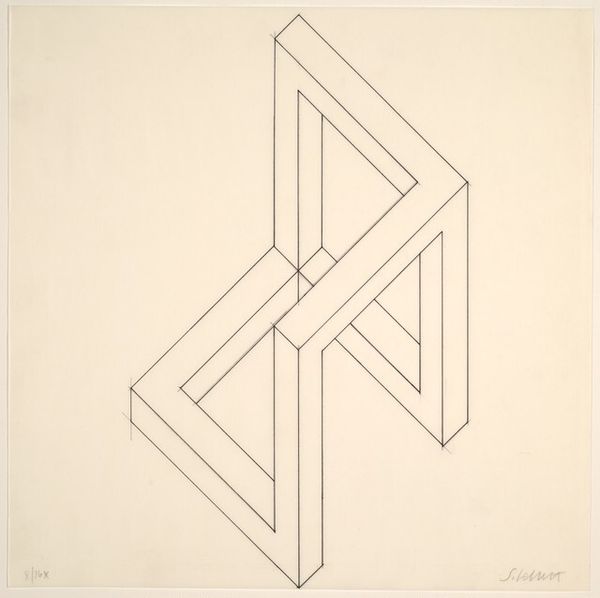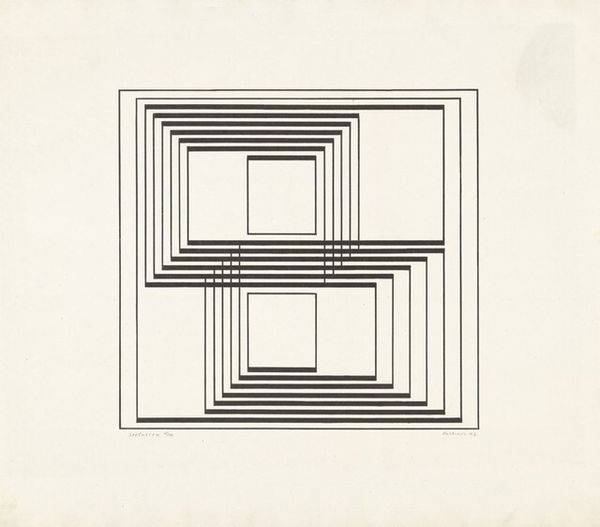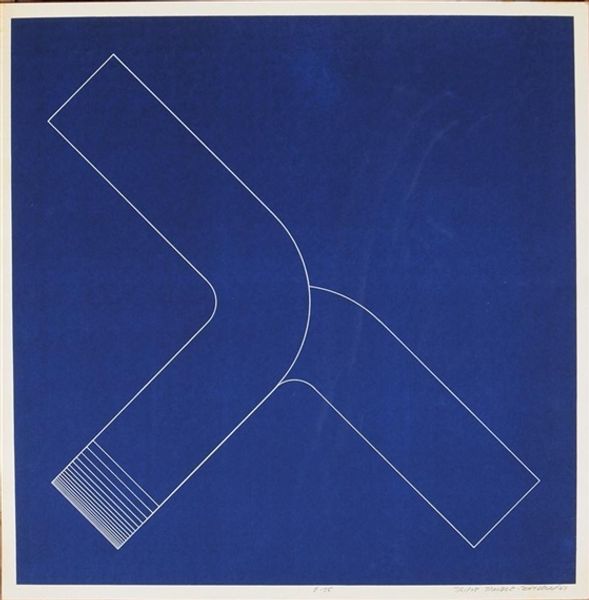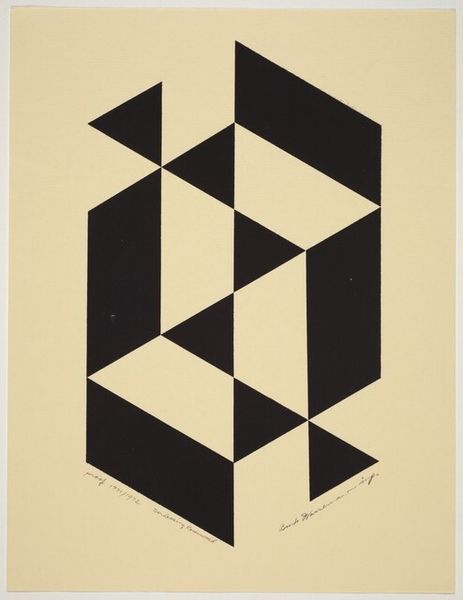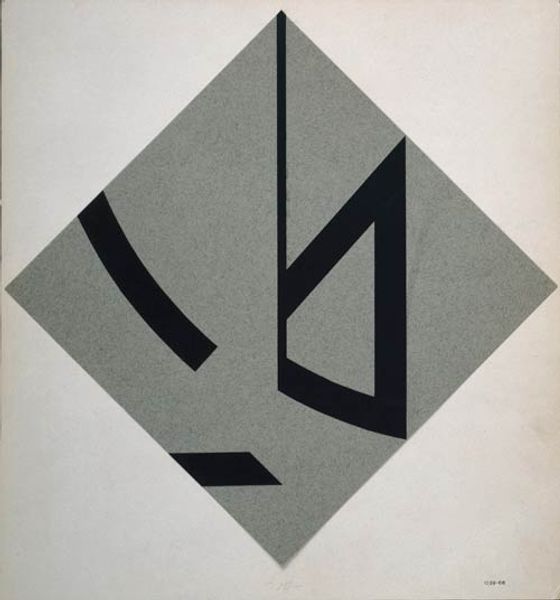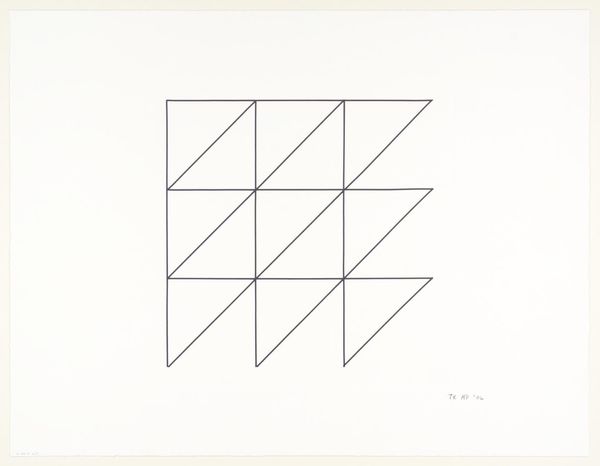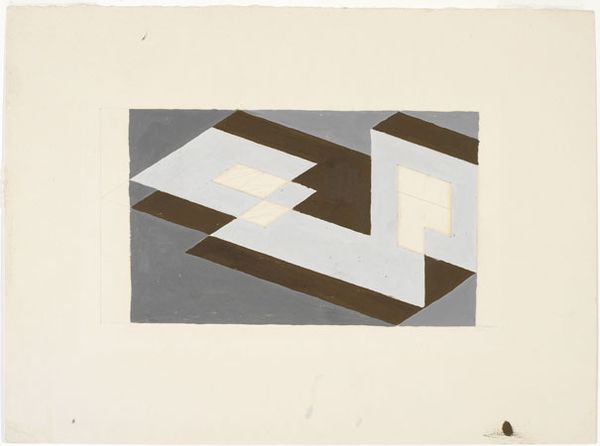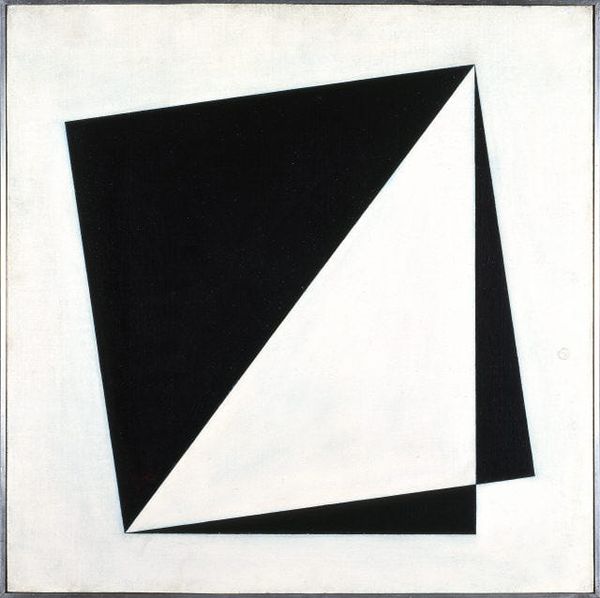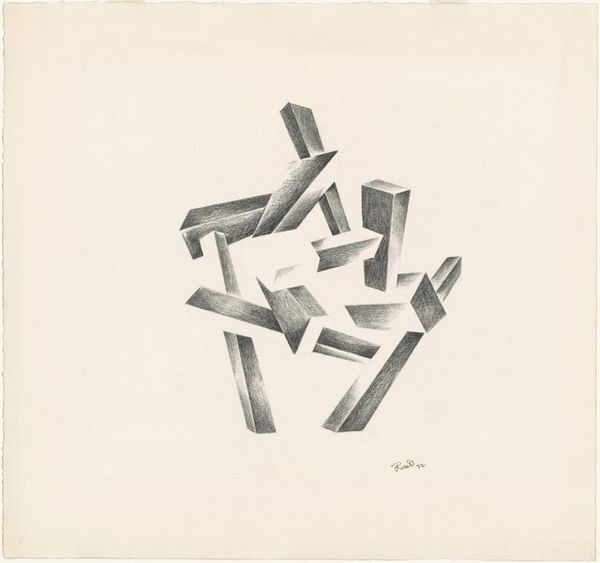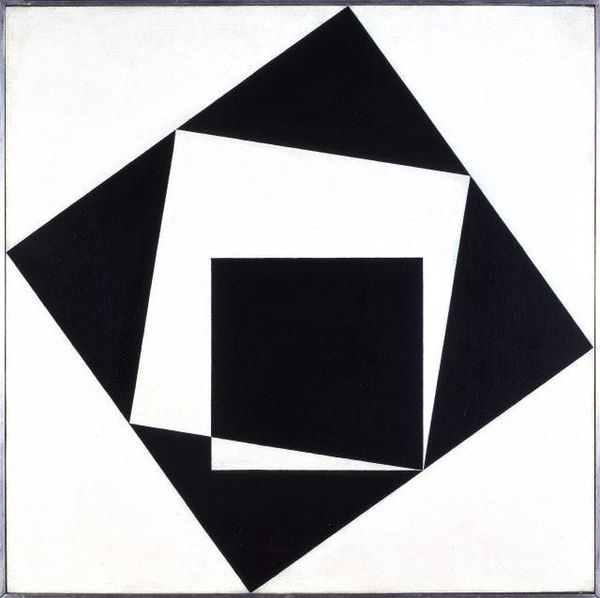
drawing
#
drawing
#
conceptual-art
#
minimalism
#
form
#
geometric
#
geometric-abstraction
#
line
Dimensions: overall: 30.5 x 30.5 cm (12 x 12 in.)
Copyright: National Gallery of Art: CC0 1.0
Curator: Here we have Sol LeWitt's "Incomplete Cube," a drawing from 1974. It's striking in its simplicity. Editor: Yes, I'd say simplicity verging on austerity. My initial reaction is a feeling of unease, that something's not quite right, almost like a diagram for something impossible to construct. Curator: Well, consider LeWitt's emphasis on the idea, the concept, over the finished product. He often used assistants to execute his wall drawings and structures. It's less about a precious art object than it is about labor and execution following clear instructions. In this case, you know, he is taking a pencil to paper and outlining a basic incomplete form. It seems like a rudimentary task, really. Editor: That incompleteness is very potent, though. Cubes in general, in art and in our minds, symbolize stability and solidity. This fragmented cube could symbolize, through its negative space, concepts of imperfection and instability in life and existence, something that perhaps deeply affected society during the time it was made, after the turbulent '60s. Curator: Interesting point. We might also read that as him taking the cube as the base unit, deconstructing it, and putting it in dialog with seriality and progression and labor that can be replicated according to rules or sets of instructions. The work becomes less about pure aesthetic form and more about a visual system, the idea made tangible through process and repeated production. Editor: But it's precisely through its stark reduction and careful presentation that the artist communicates so effectively. LeWitt has, in a sense, constructed his cube like an ideogram, making its symbolic essence all the more readable. Even viewers without knowledge of Minimalism would feel it in their bones. Curator: Absolutely. It shows how seemingly basic forms, line, and spatial representation, still embody such depth when we think about their manufacture, and meaning to others in the process. It brings forth so much that remains to be analyzed. Editor: I'll carry that sentiment forward with the knowledge that geometric figures, no matter how simply presented, carry such a weight and history.
Comments
No comments
Be the first to comment and join the conversation on the ultimate creative platform.
